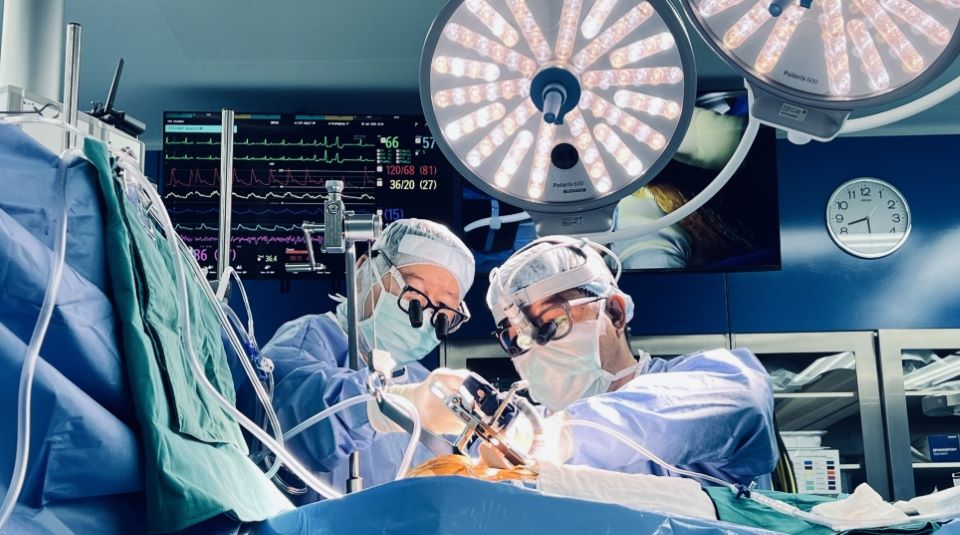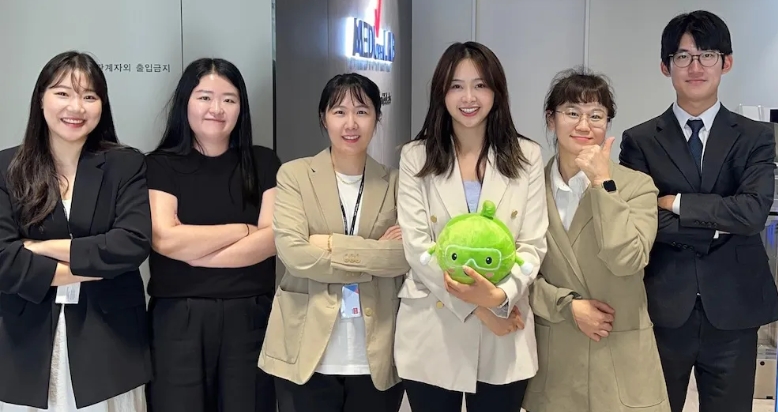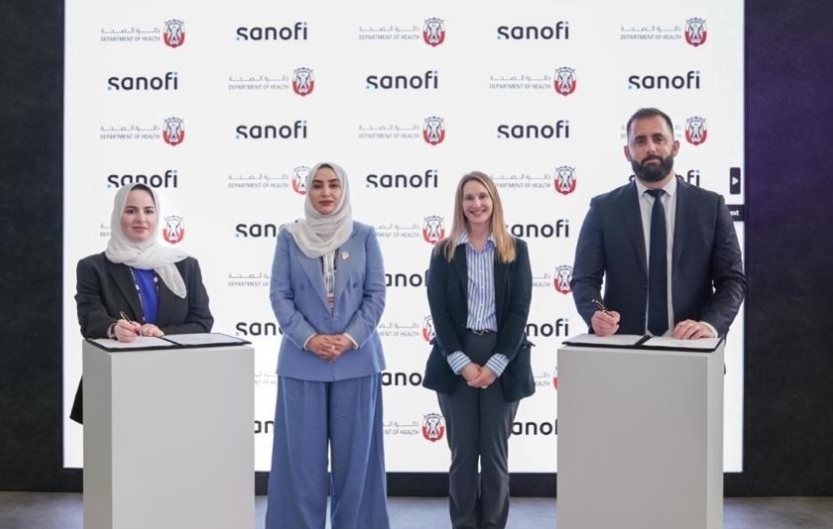
In 2022, the World Health Organisation South-East Asia Region (WHO SEAR) released the third progress analysis of implementing NAPs to address AMR. The analysis reveals that all eleven member states in the region made progress against the NAP-AMR between 2018 and 2021, with Bhutan, Korea, and Thailand leading the way. These achievements occurred despite the challenges posed by the COVID-19 pandemic. The implementation of NAP-AMR in all countries of the region reached 64 per cent progress, a significant improvement compared to 40 per cent recorded in the second situational analysis in 2018. Furthermore, there were no reported regressions in implementation status during 2021, as compared to the 2018 analysis. Many innovative approaches and technologies are being deployed against the AMR scourge.
There have been incremental steps taken to address this monumental crisis. Experts, however, believe that the progress made so far is not enough given the severity of the situation.
Sharing his views on the steps taken John Alter, Head of external affairs at the AMR Action Fund said, “Quite frankly, not enough is being done given the global scale of AMR, which now contributes to nearly 5 million deaths a year. There has been some meaningful progress toward improving stewardship, crafting and implementing National Action Plans, raising awareness and bringing stakeholders to the table—all of which are important steps. But when it comes to addressing the market failures that plague antibiotics and hinder the development of urgently needed therapies, we are well short of where we need to be and falling further behind each year. Health and Finance Ministers across the G7 have consistently emphasised the need for policies that incent innovation, but, with a few exceptions, policymakers have been too slow to act and it is patients who suffer as a result. We need to do a lot more to tackle AMR, and we need to start doing it now.”
A report for G7 Finance and Health Ministers detailing progress on incentivising the development of new antibacterial treatments released by World Health Organisation (WHO), in partnership with the Global AMR R&D Hub on May 15, 2023 has proposed a set of priority actions to accelerate progress over the next two years. These include working towards relevant commitments and targets for the high-level meeting on AMR at the United Nations General Assembly in 2024; encouraging alignment and targeted action on financing mechanisms to address the antibiotic R&D and access crisis; and bolstering equitable and global access to antibiotics addressing the most urgent public health needs.
The report also noted that substantial progress has been made by G7 countries to support research and development (R&D), particularly by increasing investments and creating new incentive mechanisms to stimulate R&D. However, current efforts remain insufficient to address the antibiotic pipeline and access crisis. In particular, efforts to ensure equitable access to antibiotics in low- and middle-income countries (LMICs) that experience the highest burden of AMR, are lacking.
To overcome the issue of AMR, in 2020, the International Federation of Pharmaceutical Manufacturers & Associations (IFPMA) brought together over 20 major pharma companies and public institutions to launch a $1 billion fund to support antibiotic R&D. In 2022, the fund made its initial investment by backing US-based firms Adaptive Phage Therapeutics (APT) and Venatorx Pharmaceuticals. These companies have been making use of the emerging technologies such as artificial intelligence/ machine learning (AI/ML) in the combat against AMR.
Tech to the rescue
Emerging technologies such as AI/ML are showing some promise in the fight against AMR, especially in terms of enhancing drug discovery efforts and speeding up diagnostics and susceptibility testing.
According to many studies it is undoubtedly true that in the future, AI will enhance our ability to support healthcare decision-making, but humans must still interpret information according to the unique circumstances of each patient. Clinical decision-making is complex and the utility of ML-driven approaches in real-world settings has to be proved before they can be integrated into the clinical workflow.
“Technology would be key to solving the AMR problem efficiently and globally. Establishing testing technology to quickly determine which antimicrobials are effective would certainly contribute to antimicrobial/ diagnostic stewardship. In other words, that will save patients' lives, caregivers' time, health workers' physical and mental resources, clinics' products and ultimately nations' finances. Identifying bacteria requires skilled laboratory technicians, but technology will make it easier to put their skills into practice,” said Yui KOHNO, Manager, Health and Global Policy Institute / AMR Alliance Japan.
Health and Global Policy Institute (HGPI) is a non-profit, non-partisan, independent health policy think tank based in Tokyo. It serves as the secretariat of AMR Alliance Japan. The Alliance currently consists of 25 public and private stakeholders, including Japanese medical societies working in infectious disease, pharmaceutical and medical device companies, and civil society organisations.
Talking on the technology developments Maurizio Luongo - Chief Executive Officer, Menarini Asia Pacific, said “We know that existing diagnostic techniques in most secondary and tertiary care have low yield and are slow (usually taking 48-72 hrs) to deliver the exact pathogen report and corresponding antibiotic sensitivity reports. Technology, therefore, holds the key to unlocking the newer rapid point of care testing technologies that can reduce the time to pathogen identification and facilitate faster, optimised antimicrobial treatment.”
Menarini has made investments in AMR, offering a comprehensive range of innovative solutions that support laboratories. These solutions enable the decentralisation of sample testing, addressing the specific needs of infectious disease routines and core and anatomopathology laboratories.
Besides working on testing technology, diagnostic techniques researchers are already utilising AI to support the development of cost-effective vaccines and other alternative medicines. In May 2023, scientists at McMaster University and the Massachusetts Institute of Technology used AI to discover a new antibiotic which could be used to fight a deadly, drug-resistant pathogen that strikes vulnerable hospital patients.
However, scientists in Australia have been working on the SuperbugAi Flagship Project, with a $3.4 million the Medical Research Future Fund (MRFF) grant for improving diagnosis, treatment and prevention of AMR in hospitals and the healthcare system. The primary goal of the SuperbugAi Flagship Project is to develop innovative approaches for the prevention, detection and treatment of AMR infections. The research project also aims to create a tracking and response system to lead to earlier detection of superbugs, personalised treatment for patients and prevention of outbreaks. SuberbugAi has the potential to save patient lives, prevent superbug spread, and improve healthcare quality, resource utilisation and costs.
Technology can also contribute to monitoring the effectiveness of interventions to optimise the use of antimicrobials (AMU) over time by facilitating the analysis of data. Speaking about the use of technology in AMR research, Dr Branwen Morgan, the Minimising AMR Mission Lead at The Commonwealth Scientific and Industrial Research Organisation (CSIRO) Australia’s National Science Agency said “It starts and ends with data. Data tells us how big the problem is– it provides the economic rationale - as well as where to look for AMR and where to put our resources from a geographic and demographic perspective. It will be different for each country. Data can also inform the type of R&D that is needed and reveal where solutions are already being developed and deployed. If we do this on a global scale and leverage each other’s investments, we can avoid duplication and maximise impact on AMR.”
The Mission was initiated by CSIRO and co-developed with the Department of Health and Aged Care and the Department of Agriculture, Fisheries and Forestry, Australia.
In addition to having strong data there is a need for a well-organised national surveillance network. The extent of AMR (e.g., prevalence and trends, public health significance of resistance phenotypes or species) is best determined through quality laboratories that are interconnected in such national surveillance network. But building such surveillance network remains a challenge though for many countries, in particular those in the WHO’s SEAR region
Expressing her views, Melissa Gong Mitchell, Secretariat Lead of the AMR Industry Alliance, Switzerland said “Surveillance programmes, such as the World Health Organisation’s Global Antimicrobial Resistance and Use Surveillance System (GLASS)—which standardised AMR surveillance—and the US Center for Disease Control’s various databases for tracking AMR both in the US and globally, rely on technology to ensure accurate and timely information, which in turn impacts local, regional and global decision-making. As data collection technology continues to evolve and improve, the information gathered will enhance efforts to combat AMR.”
The AMR Industry Alliance, a large private sector coalition comprising over 100 biotech, diagnostics, generics, and research-based pharmaceutical companies and associations was formed in response to the United Nations' call for action in 2016. The alliance aims to provide sustainable solutions to combat AMR by promoting proactive action and fostering collaboration among its members. It has made notable advancements in the areas of manufacturing, access, appropriate use, and research and science.
Alternatives to antibiotics
Innovation in the antibiotic area is slowly increasing again. Scientists are developing various antibiotic alternatives like phage therapy, antibiofilms drugs etc. to drive innovation in this space.
A 2020 report by WHO revealed a weak pipeline for antibiotic agents. The 60 products in development (50 antibiotics and 10 biologics) bring little benefit over existing treatments and very few target the most critical resistant bacteria (Gram-negative bacteria), according to the report.
Australian researchers are leading the way in phage research and development to combat AMR. In 2022, a team comprising researchers from the University of Sydney, Western Sydney Local Health District, and the Westmead Institute for Medical Research achieved remarkable success in using phage therapy to treat severe infections and save lives. Their pioneering work is focused on making phage therapy accessible across the Australian healthcare system and the Asia Pacific region in the coming five years.
In May 2023, the Monash Biomedicine Discovery Institute (BDI) team successfully conducted 'bioprospecting' for phages capable of killing deadly superbugs. The team made significant progress in identifying phages that selectively target superbug bacteria while sparing beneficial bacteria. These findings hold the potential for improving the selection of specific phages to effectively treat antibiotic-resistant bacterial infections.
Singapore scientists are also working on phage therapies for AMR. A team of researchers from Singapore-MIT Alliance for Research and Technology (SMART), MIT's research enterprise, made a significant breakthrough by uncovering a novel anti-phage defence mechanism present in certain bacteria. This mechanism employs previously unidentified characteristics to safeguard their DNA. This groundbreaking discovery paves the way for scientists to address the existing hurdles associated with bacterial resistance to antibiotics. Their findings offer new avenues for developing innovative strategies to tackle AMR effectively.
While in India, Vitalis Phage Therapy, founded by Pranav and Apurva, has pioneered a framework for patients to receive phage therapy and access phage diagnostics. Their personal experience with Pranav's antibiotic-resistant prostatitis infection led them to discover and advocate for the use of phage therapy as an alternative treatment. Over the past five years, Vitalis Phage Therapy has enabled over 200 patients to undergo phage therapy, and now, in collaboration with medical institutions, they aim to extend access to this innovative treatment to all patients suffering from chronic, recurrent, or antibiotic-resistant infections.
Antibiofilm is also making waves and emerging as an important tool in the fight against AMR. Lixa, an Australian-based biotechnology company, is dedicated to developing revolutionary and scalable solutions to tackle the challenges of AMR and the global biofilm problem, which accounts for a staggering $5 trillion annually. Biofilms, which are resistant to antibiotics and immune system defences, contribute to 80 per cent of chronic and recurrent infections.
Despite being a major cause of AMR, there is currently a lack of effective and safe antibiofilm drugs available to clinicians. Lixa aims to address this critical gap by focusing not only on human and animal health but also on tackling biofilm-related issues in various domains such as ship hulls, water filters, livestock environments, and surgical implants. With the development of their disruptive NeoX antibiofilm platform technology, Lixa aims to provide solutions for recalcitrant, resistant, and recurring bacterial infections across human, animal, and environmental health.
Vaccines also play a crucial role in combating AMR and have a remarkable track record in reducing its impact. The administration of vaccines against H. influenzae b and S. pneumoniae has led to a significant decline in disease prevalence and has been linked to a decrease in the occurrence of drug-resistant strains. Furthermore, these vaccines indirectly contribute to the fight against AMR by reducing the need for antibiotics, thereby alleviating the selection pressure on pathogens. Universal coverage with the 13-valent S. pneumoniae vaccine could prevent approximately 11.4 million days of antibiotic usage annually among children under the age of five, according to a study published in Nature Medicine. The WHO's Global Vaccine Action framework is also focused on expanding the use of licensed vaccines to maximise their impact on AMR.
WHO released its first-ever report on the pipeline of the vaccines currently in development to prevent infections caused by AMR bacterial pathogens in July 2022. WHO’s analysis points to the need to accelerate trials for AMR related vaccines in late-stage development and maximise the use of existing vaccines.
The analysis identifies 61 vaccine candidates in various stages of clinical development, including several in late stages of development to address diseases listed on the bacterial priority pathogens list, which WHO has prioritised for R&D. While the report describes these late-stage vaccine candidates as having a high development feasibility, the report cautions that most will not be available anytime soon.
The report also examines some of the challenges facing vaccine innovation and development, including for pathogens associated with hospital-acquired infections (HAI). These include the difficulty in defining target population(s) among all admitted hospital patients; the cost and complexity of vaccine efficacy trials; and the lack of regulatory and/or policy precedent for vaccines against HAIs.
Addressing the gap
While the development of new treatment methods is crucial for combating AMR, in the meantime, it is essential to promote responsible and sustainable use of existing antibiotics.
“It is critical that we see policies that encourage a more sustainable pipeline of antibiotics. Governments can take three key actions: firstly, support incentives that help de-risk early-stage R&D. Secondly, show support for novel mechanisms that help companies ensure a predictable return for new medicines. And thirdly, ensure that reimbursement mechanisms better capture the value novel antibiotics bring to patients, healthcare systems and society,” said James Anderson, Executive Director of Global Health, IFPMA, Switzerland. IFPMA is the body representing the industry at the global level and actively contributes to solutions that help tackle AMR.
Echoing similar sentiments John Alter said, “Inappropriate antibiotic prescribing remains a significant global challenge, especially for kids. A recent study in several countries across Africa and Asia found that more than 75 per cent of consultations resulting in an antibiotic prescription for children and younger involved a diagnosis that didn't require an antibiotic. That’s a significant finding, and it underscores the challenges facing governments and health systems in low- and middle-income countries (LMICs), which shoulder the heaviest burden of AMR infections. Policies that improve and encourage stewardship are critical, but we also need to ensure that clinicians, particularly in LMICs, have access to better diagnostics and effective therapies. It’s also worth noting that vaccines are an important part of the puzzle that could help prevent illnesses, drive down unnecessary antibiotic prescribing, and slow the spread of drug-resistant infections. There’s no silver bullet for this problem, unfortunately. Containing drug-resistant infections requires close collaboration across sectors and across disciplines.”
Expanded access to accurate and rapid molecular-based diagnostic tools, particularly in resource-limited settings is a key effort to address AMR.
“Diagnostic companies can develop advanced diagnostic technologies specifically designed for AMR that include molecular tests to detect drug resistance markers, assess susceptibility profiles, and provide timely results. These technologies can aid in early diagnosis, appropriate treatment selection, and effective management of AMR. By advancing the development of effective and targeted interventions through novel therapies and companion diagnostics, biotech companies can contribute to preventing the emergence and spread of AMR,” said Jane Theaker, CEO of PBD Biotech, UK. PBD Biotech is a pioneer in phage-based diagnostics and is developing actiphage a blood-based, molecular test that has the unique ability to penetrate the thick cell wall to overcome cell wall impermeability and inaccessibility to Multidrug-resistant TB (MDR TB) DNA for existing test methods.
AMR Alliance Japan recommends policy action for diagnostic stewardship. Although antimicrobial stewardship in the clinical setting and a kind of mindset have improved, diagnostic services underlie the stewardship.
“Once the pull incentive scheme is well implemented and the pharmaceutical industry benefits from this scheme, there would be an increased need for decent diagnostic services for stewardship. The policy should act on better diagnostic services, while the diagnostic industry should look back at its own trajectory during COVID-19 and reconsider its business model,” said Yui KOHNO.
AMR needs an all-hands-on-the-deck approach. Appropriate use of antibiotics, more robust national action plans, strong surveillance systems, incentives and support for research and development of new antibiotics, diagnostic tests, and alternative therapies are needed to outsmart superbugs. As COVID-19 has taught us, the cost of being prepared for a pandemic is less, compared to ‘reacting’ to a pandemic. We really must act strongly, before it's too late.
Ayesha Siddiqui




